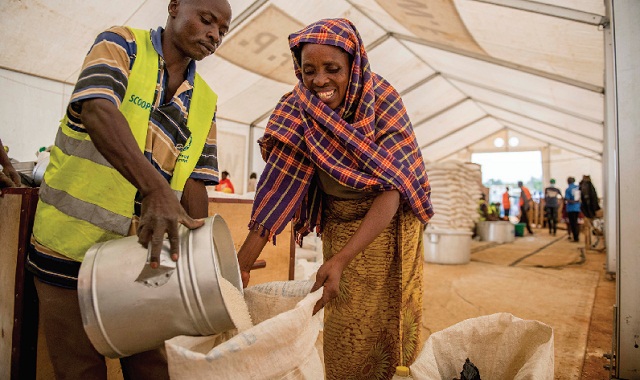
Kampala, Uganda | THE INDEPENDENT | Global hunger is once again on the increase, with the number of hungry people standing at 820 million, according to the annual State of Food Security and Nutrition in the World report released last evening.
The number of people that did not have enough to eat stood at 811 million people in the previous year. But for the third year running, more and more people are starving and undernourished, mostly in Africa, and countries where economic growth is lagging. The report attributes the situation to climate and conflict, as well as economic slowdowns and downturns.
Almost half the countries where rising hunger occurred due to economic slowdowns or stagnation were in Africa.
Uganda is placed amongst East African countries that suffered an increase in food crisis by almost 20 per cent. It shows that the prevalence of undernourishment increased from 24.1 per cent in 2006 to 41 per cent in 2018. This translates into an increase in the number of malnourished people from 6.9 million in 2006 to 17.6 million in 2018.
Factors responsible for the economic downturn include the rise in external government borrowing, increase in the rate of unemployment, lower inflation, lower investment and low consumer spending amongst others. Other indicators assessed in the report include child wasting and stunting, child and adult obesity and the prevalence of anaemia among women of reproductive ages 15 – 49.
The report shows that Anaemia increased from 32.3 in 2016 to 34.0 in 2018 among women in Uganda while the prevalence for exclusive breastfeeding rose from 38.2 to 50.1 over the same period. Other economic shocks which brought about food crisis are were increasing food prices, poverty, climate change and conflicts.
The Agency defines the prevalence of undernourishment (PoU) as an estimate of the proportion of the population whose habitual food consumption is insufficient to provide the dietary energy levels that are required to maintain a normal active and healthy life.
Data on the prevalence of severe food insecurity and moderate food insecurity in the total of 42 Million population of Uganda is however unavailable in the report. It blames the increase on economic fluctuations which resulted in periods of growth and contractions over the period of assessment.
Gilbert Houngbo, the President of International Funds for Agricultural Development says the main message in the report is that achieving Sustainable Development Goal number two; Zero Hunger and Sustainable Goal number one – Ending poverty is becoming challenging with each passing year.
The report recommends country-level concerted efforts to improve the food security situation including investment in Agriculture. It calls for action to safeguard food security and nutrition through economic and social policies that help counteract the effects of economic slowdowns or downturns.
The other is to ensure universal access to health and education as well as tackling existing inequalities at all levels through multi-sectoral policies that make it possible to more sustainably escape from food insecurity and malnutrition.
This year, farming activities started late in most regions of Uganda due to the delayed return of rainfall as most people rely on rain-fed agriculture to grow their food.
*****
URN
 The Independent Uganda: You get the Truth we Pay the Price
The Independent Uganda: You get the Truth we Pay the Price




This is the most confusing article that I have read and I suspect that it is so because of the person who did the synthesis. Let me look for the report itself.
Early signs of excessive magnesium intake can include low blood pressure, facial flushing, depression, urine retention, and fatigue.
Eventually, if untreated, these symptoms can worsen and include muscle weakness, difficulty breathing, irregular heartbeat, and even, in very rare cases, cardiac isements.
CONTINUE READING BELOW.